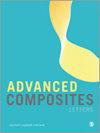Optimization of FSW parameters for maximum UTS of AA6082/SiC/10P composites
IF 1.7
4区 材料科学
Q3 MATERIALS SCIENCE, COMPOSITES
引用次数: 10
Abstract
Friction stir welding (FSW) offers significant advantage when compared with fusion joining process such as no shield gas or flux are used, no harmful gases are produced, thereby making the FSW environmentally friendly. In this work, an experimental approach has been used for studying and optimizing the FSW process, applied on AA6082/SiC/10P composite plates. In particular, the effect of process parameters on ultimate tensile strength (UTS) of FSW joint has been investigated. The UTS of FSW joints is affected by FSW parameters. The FSW of the AA6082/SiC/10P composite plates was carried out with different combinations of FSW parameters. The experiments were conducted according to the Taguchi’s L9 orthogonal array. Taguchi method of designing the experiments was used for optimization of the FSW parameters. The signal to noise ratio and analysis of variance were used to determine the effects of FSW parameters on the UTS of the welded joints. The optimum FSW parameters for the maximum UTS were found to be the tool rotation speed of 1800 r/min, the welding speed of 100 mm/min and the tool tilt angle of 2°. UTS increased by 24.5% when FSW was carried out at optimum process parameters as compared to initial FSW parameters. Results have shown good agreement between the predicted and experimental values of UTS. High tensile strength is required for use of FSWed AA6082/SiC/10P composite joints in aerospace industry.AA6082/SiC/10P复合材料最大UTS FSW参数的优化
搅拌摩擦焊不使用保护气体和焊剂,不产生有害气体,是一种环境友好型焊接工艺。本文采用实验方法对AA6082/SiC/10P复合材料的FSW工艺进行了研究和优化。重点研究了工艺参数对FSW接头极限抗拉强度的影响。FSW接头的UTS受FSW参数的影响。采用不同的FSW参数组合对AA6082/SiC/10P复合材料板进行了FSW测试。实验依据田口L9正交阵列进行。采用田口法设计实验,对FSW参数进行了优化。采用信噪比和方差分析确定了FSW参数对焊接接头UTS的影响。结果表明,刀具转速为1800 r/min,焊接速度为100 mm/min,刀具倾角为2°时,可获得最大焊接强度。与初始FSW参数相比,在最佳工艺参数下进行FSW时,UTS增加了24.5%。结果表明,UTS的预测值与实验值吻合较好。航空航天工业中使用的fswwed AA6082/SiC/10P复合材料接头要求具有较高的抗拉强度。
本文章由计算机程序翻译,如有差异,请以英文原文为准。
求助全文
约1分钟内获得全文
求助全文
来源期刊

Advanced Composites Letters
工程技术-材料科学:复合
自引率
0.00%
发文量
0
审稿时长
4.2 months
期刊介绍:
Advanced Composites Letters is a peer reviewed, open access journal publishing research which focuses on the field of science and engineering of advanced composite materials or structures.
 求助内容:
求助内容: 应助结果提醒方式:
应助结果提醒方式:


